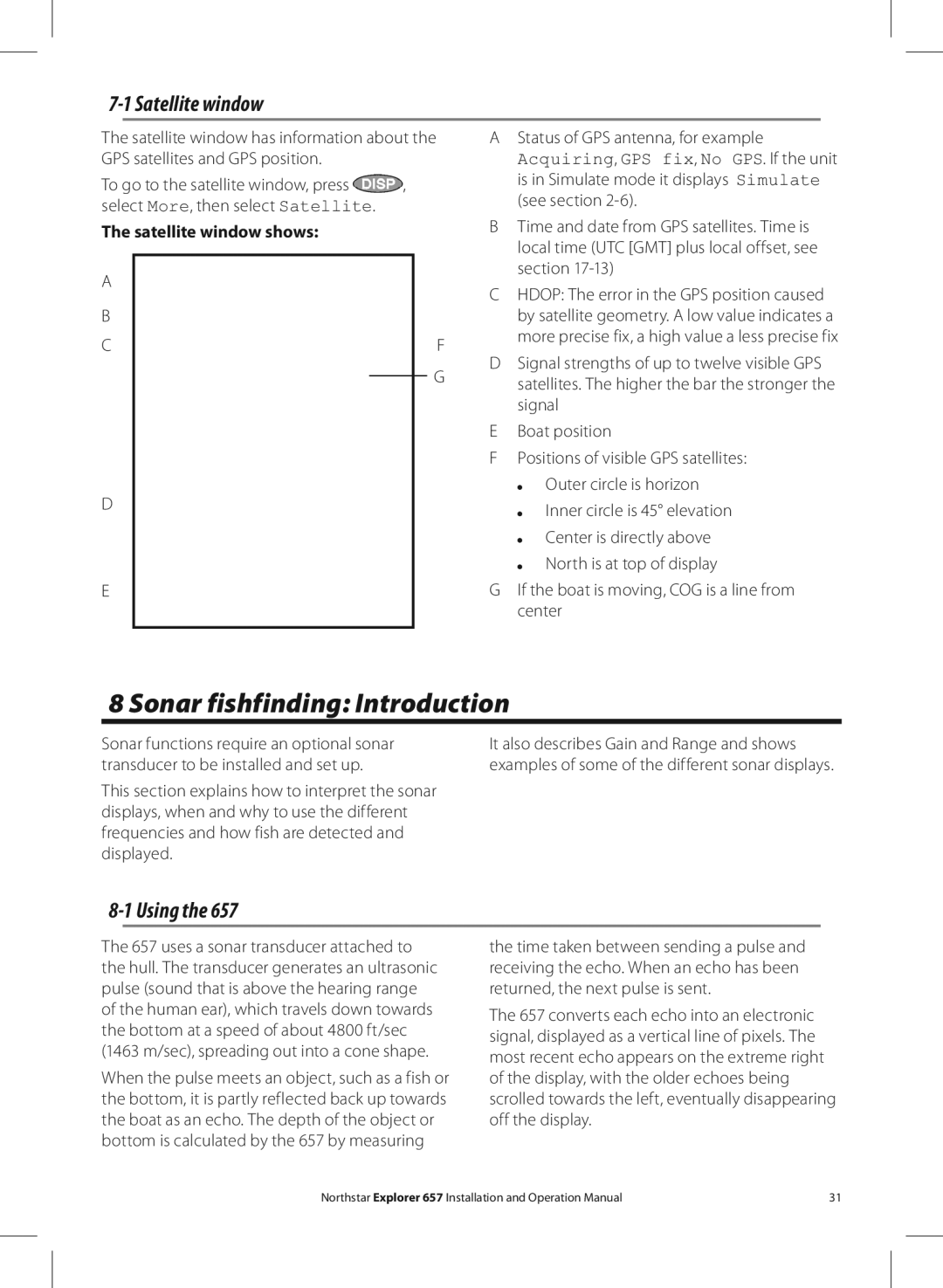
7-1 Satellite window
The satellite window has information about the GPS satellites and GPS position.
To go to the satellite window, press | , |
|
| ||
select More, then select Satellite. |
|
|
| ||
The satellite window shows: |
|
|
| ||
|
|
|
|
|
|
A |
|
|
| ||
B |
|
|
| ||
C |
|
| F | ||
|
|
|
|
| G |
|
|
|
|
| |
D
E
AStatus of GPS antenna, for example
Acquiring, GPS fix, No GPS. If the unit is in Simulate mode it displays Simulate (see section
BTime and date from GPS satellites. Time is local time (UTC [GMT] plus local offset, see section
CHDOP: The error in the GPS position caused by satellite geometry. A low value indicates a more precise fix, a high value a less precise fix
DSignal strengths of up to twelve visible GPS satellites. The higher the bar the stronger the signal
EBoat position
FPositions of visible GPS satellites:
Outer circle is horizon
Inner circle is 45° elevation
Center is directly above
North is at top of display
GIf the boat is moving, COG is a line from center
8 Sonar fishfinding: Introduction
Sonar functions require an optional sonar transducer to be installed and set up.
This section explains how to interpret the sonar displays, when and why to use the different frequencies and how fish are detected and displayed.
It also describes Gain and Range and shows examples of some of the different sonar displays.
8-1 Using the 657
The 657 uses a sonar transducer attached to the hull. The transducer generates an ultrasonic pulse (sound that is above the hearing range of the human ear), which travels down towards the bottom at a speed of about 4800 ft/sec (1463 m/sec), spreading out into a cone shape.
When the pulse meets an object, such as a fish or the bottom, it is partly reflected back up towards the boat as an echo. The depth of the object or bottom is calculated by the 657 by measuring
the time taken between sending a pulse and receiving the echo. When an echo has been returned, the next pulse is sent.
The 657 converts each echo into an electronic signal, displayed as a vertical line of pixels. The most recent echo appears on the extreme right of the display, with the older echoes being scrolled towards the left, eventually disappearing off the display.
Northstar Explorer 657 Installation and Operation Manual | 31 |
